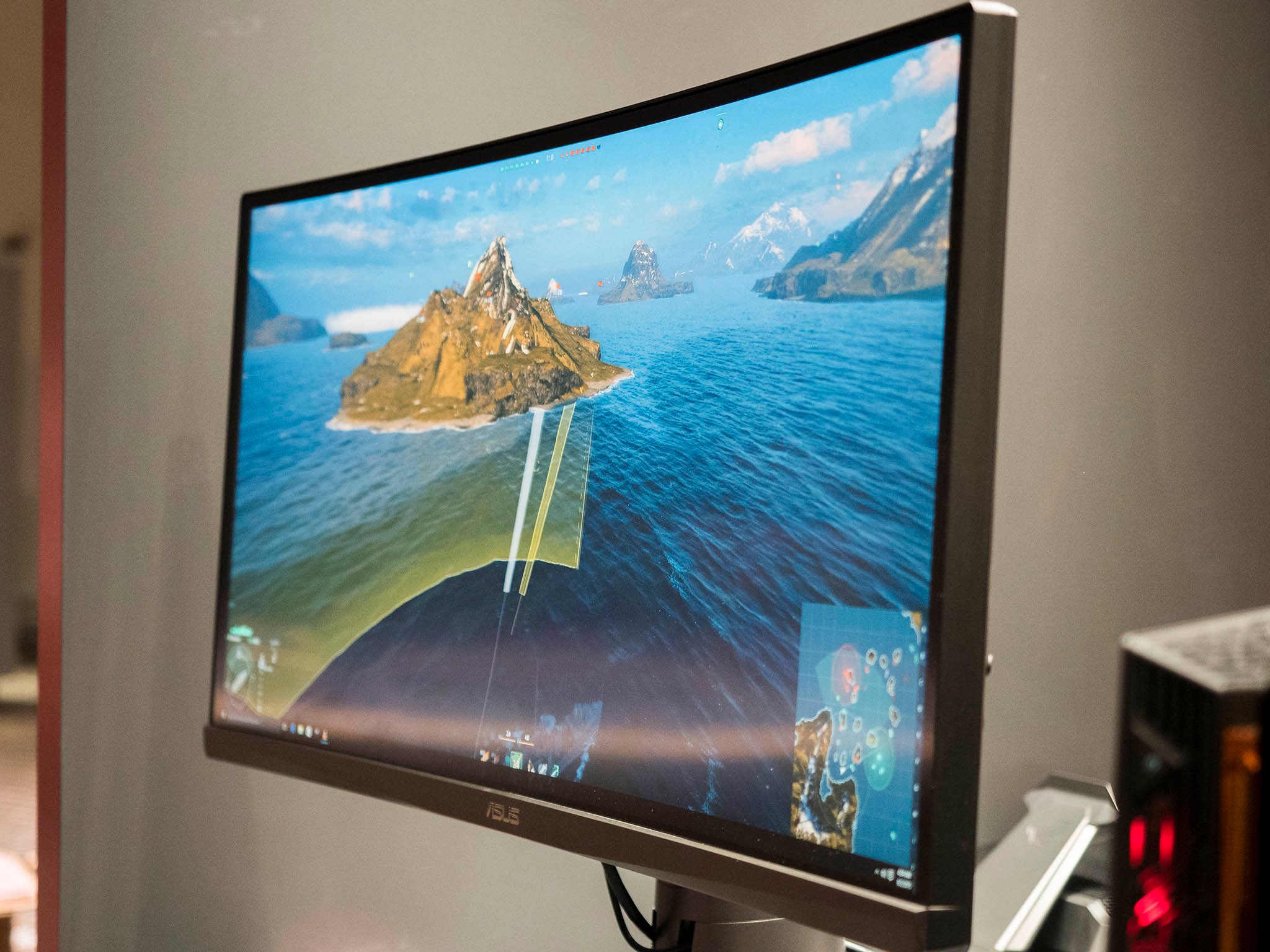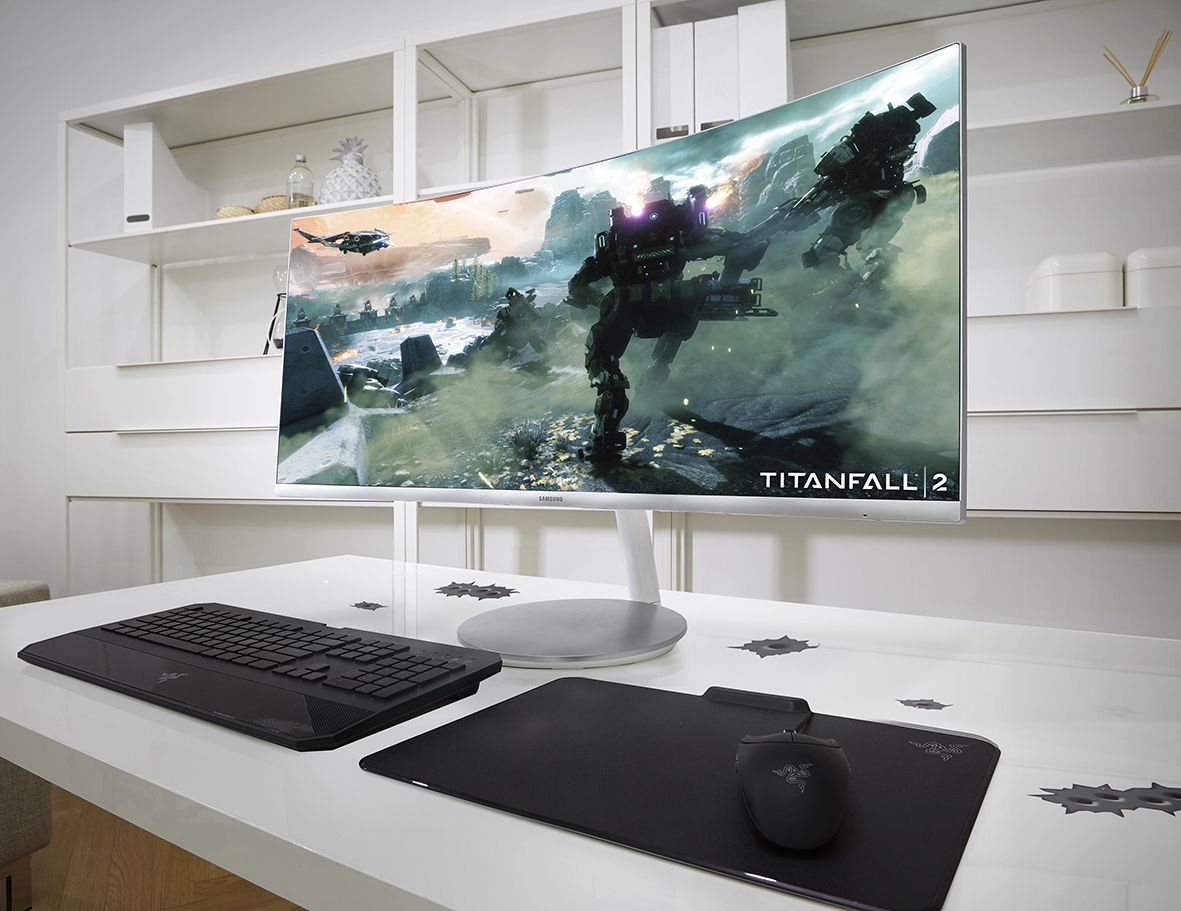Should you invest in a curved display?
Everybody loves curves, but should you have them on your TV and monitor? It's up to you.

4K and HDR technologies may well be on the horizon and arriving soon to a living room near you, but you also now have the option to invest in a display that's physically curved. Much like the aforementioned features, curved displays are a fairly uncommon sight, which is partly due to them being rather expensive. More manufacturers are looking to release more affordable curved displays, particularly for gamers, and so we'll be taking a look as to whether or not you may wish to pick one up.
Curved displays are marketed as being brilliant additions to any media viewing experience due to the increase in immersion for the viewer. It's touted as being similar to the visual wonders of IMAX, albeit on a smaller scale. Having the display itself physically wrap around the viewer helps increase the field of view (or FOV for short) and is the latest cool new hit after the slow and gradual fade out of 3D, which barely took off. But does all this actually work and is your viewing experience truly enhanced sitting in front of a curved screen?
Yes, and no. The curvature of the display can help bring images and content displayed on-screen to life to a degree, much like you'd find in a 3D set, but this can also lead to reflections becoming even more of a pain with the angled surface. At least with a flat panel you could angle it in such a way that your light source wouldn't hamper your viewing. Curved screens also may appear to look "cooler" than their flat counterparts, but this added wow factor requires you to part with more cash.

Unfortunately, you really need quite the screen size to really reap any reward that comes with curved displays. This may be ideal for the living room with a 60-inch HDR, 4K monster of a panel, but for your office this could prove to be underwhelming, especially when you consider just what types of content you'll be gazing at throughout the day. Rocking two or more curved screens in a multi-monitor setup can create the illusion you're in a cockpit, but for the average gamer or PC user, I just don't see the advantage.
We're going to be seeing more and more curved displays on TVs, monitors and even laptops, but again it's entirely down to you as to whether or not you find it worth the money. I'd definitely recommend heading down to your local electronics store or supermarket and have a look at various screen units there, both flat and curved. What may not work out for me and many others may absolutely blow your mind away when you fire up Elite Dangerous on your new 2x 30-inch curved display gaming hub.
Here are some listings for curved displays, should you be interested:
Monitors
- Samsung CF591 27-inch — $279.99
- Dell UltraSharp U3415W 34-inch — $699.99
- LG 34UC97-S 34-inch — $749
TV Sets
- Samsung UN55KU6500 55-inch 4K — $797.99
- LG 60UH6150 60-inch 4K — $997
- Hisense 65H7B2 65-inch 4K — $898
It really boils down to personal preference. If you're happy with a flat screen and also find yourself doing some work on the monitor, it may not be the best investment to fork out for a curved display. That said, if you want to upgrade to a 30-inch or larger gaming experience, having a curved screen to gaze into might just be the perfect match. Also, should you be someone who absolutely must purchase the latest in gadgets and remain ahead of the curve (excuse the idiom) then there's really nothing we could say to put you off.
All the latest news, reviews, and guides for Windows and Xbox diehards.

Rich Edmonds was formerly a Senior Editor of PC hardware at Windows Central, covering everything related to PC components and NAS. He's been involved in technology for more than a decade and knows a thing or two about the magic inside a PC chassis. You can follow him on Twitter at @RichEdmonds.
